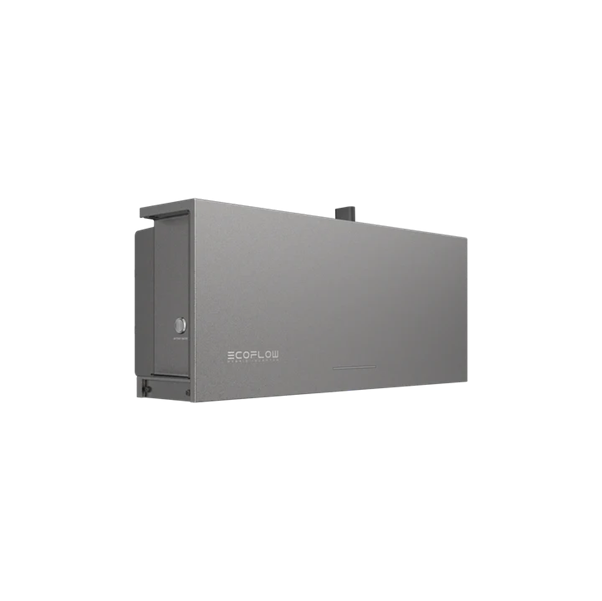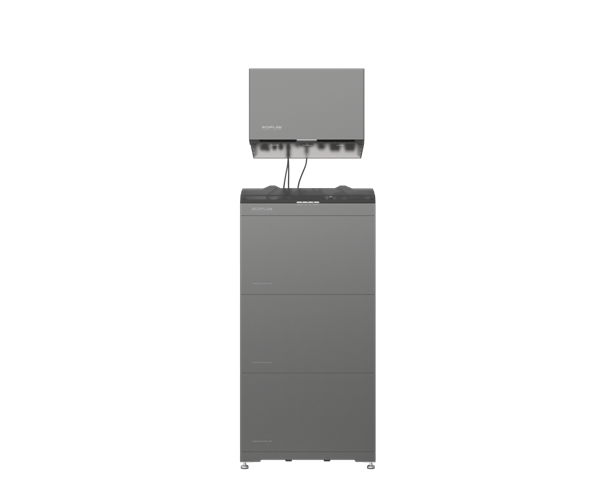How to Store Solar Energy
Solar energy is intermittent, meaning it’s only available when the sun is out. This can pose challenges for reliable power supply. You’ll need either grid power during periods of darkness or cloudiness or a backup storage element to hold excess solar power you can draw from in these moments.
Modern solar storage solutions, from batteries to thermal systems, are transforming how we harness and use this renewable resource.
What Is Energy Storage?
Energy storage is a way to capture electricity and maintain the load as a different form of energy to release for later use. Lithium-ion batteries are one example of energy storage. You can drain them, recharge them, and use them repeatedly. While energy storage efficiency is never 100% because a certain amount will always be lost in the conversion and retrieval processes, storage minimises waste, increases system efficiency, and improves power quality.
Different storage types provide different storage capacity levels (the amount that can be stored, usually in kWh) and power capacity (the amount that can be released at a given time, usually in kW). Short-term storage can work well in a solar plant to avoid output fluctuations, while long-term storage can support home solar systems by providing power when the grid goes out or the sun doesn’t shine.

How Does Solar Energy Storage Work?
Solar energy uses a battery or other storage system to capture excess electricity that your solar array generates during the day when the sun is out. The battery stores this electricity to draw from later when the sun isn’t shining, allowing you to leverage solar power even during power outages, at night, or on cloudy days. The stored energy is held in a different form, usually DC power. Then, it gets released from the battery after being re-converted into usable AC power via an inverter.
Here’s the complete process broken down:
- Solar panels generate electricity by converting sunlight into DC power
- The DC electricity then gets converted into AC for immediate use
- Excess energy in its DC form gets funnelled into the battery for storage
- When the stored energy is needed, the power gets discharged from the battery and converted into AC
Lithium-ion and lead-acid batteries are the two most common types of solar storage batteries. Lithium-ion batteries are the most common in residential solar settings because they provide a long lifespan and high efficiency.

What Are the Benefits of Storing Solar Energy?
Storing excess solar energy is a good idea for so many reasons. From balancing your electric loads to promoting a smaller carbon footprint and improved energy resilience, here are the advantages of storing your surplus solar power.
Balance Electric Loads
Electricity must either be used immediately or stored. Otherwise, it’s wasted. Energy storage allows you to capture the surplus power generated, and you can use it later when the sun goes down or grid rates are at their peak to make the most of the power your system creates.
Energy Resilience
The energy grid struggles with resilience and is vulnerable to fluctuations, disruption, and outages triggered by many causes, from severe weather to equipment damage. Solar power storage protects your home during these events by decentralising your electricity source to on-site so you can access it no matter what.
Reduce Carbon Footprint
The more you rely on the grid, the larger your carbon footprint because central electricity grids use fossil fuels as their primary source. With greater access to solar energy, you can reduce your home’s carbon footprint. The larger the battery, the more surplus you can store.
Consistent Energy Flow
Short-term storage lets you fill in the gaps that may occur when relying on solar generators, such as routine maintenance or cloudy moments.
Savings
Solar buy-back can be a great way to save money, but not every home or region has these programs available. If you can’t sell your excess power back to the grid, having a solar battery allows you to avoid waste and avoid unnecessarily drawing from the grid when the sun isn’t out. By consuming more of your own power, you’ll save more money in the long term.
What Are the Different Methods of Solar Energy Storage?
Solar Battery Storage Systems
Solar battery storage is the most common form of solar power storage for residential systems. We explained the process of how this works above. Your battery storage systems can be AC or DC coupled, large or small, and grid-tied or off-grid. It all depends on your needs. You don’t have to purchase a battery system at the same time you’re buying your solar panels and generator, either. You can add solar battery systems like EcoFlow’s PowerOcean to your existing setup to modify as needed without overhauling what you’ve already integrated into your home.
Mechanical Storage
Mechanical storage leverages potential energy to generate electricity. These methods convert excess electrical power into mechanical power, which is converted back into electricity when needed. The three most prominent forms of mechanical storage include:
Pumped-Storage Hydropower
With pumped hydro, water is pumped uphill into a reservoir when demand is low. Later, the water is released and flows back downhill into turbine generators, which are used to generate electricity at times of high demand.
Pumped hydropower is a tested and mature storage technology that has been used for nearly a century but has strict landscape requirements. Natural lakes, water features or manufactured reservoirs are required, and this process can involve long implementation times, complicated regulatory permits, significant financial investment, and a long payback period. All of these barriers contribute to the low utilisation of pumped-storage hydropower.
Flywheel Systems
This system uses surplus electricity to spin a flywheel (a heavy wheel with a rotating shaft attached), and the energy created can supply quick energy as needed. The more energy is expended, the faster the wheel turns. To extract electricity, you can attach the flywheel to an electrical generator, which slows the wheel using electromagnetism. While these systems are excellent at providing quick power, they have a low storage capacity.
Compressed Air Storage
Compressed air gets pumped into a large underground formation, cave, tank, or vessel, where it’s stored and released as needed to drive a turbine and generate additional electricity.
Thermal Energy Storage
Thermal energy storage uses mediums such as molten salt or water to absorb the sun’s heat. The heated material gets stored safely in an insulated tank until you require the energy. At that point, the material may be used directly to heat or cool the home, or it can be used to generate electricity. If needed for electricity, the heat is used to boil water, which creates steam, drives a turbine, and thus creates electrical power.
It’s the same equipment as electricity generating stations, like CSP plants, which focus sunlight to heat a fluid. Research continues to explore new potential working fluids, like supercritical carbon dioxide, to leverage higher temperatures and reduce the size of these plants.
Hydrogen Production via Electrolysis
This method uses excess solar energy to split water into two elements—oxygen and hydrogen—through electrolysis. The hydrogen produced can be stored and used later in fuel cells for electricity. It’s an excellent option for long-term storage and transportation (electric vehicles, for example). This system utilises hydrogen as a critical player, and as technology continues to advance, the prospect of more hydrogen-based energy production becomes more plausible.
Private Wire Networks
Private wire networks are a unique option that allows you to leverage privately owned power plants to store your surplus electricity and draw from the plant later without relying on a national grid.
Frequently Asked Questions
- What Is the Best Way to Store Solar Power?The best way to store solar power is with a battery storage system. Lithium-ion batteries are the most popular for residential solar storage. They can store excess power in its DC form and discharge it as usable AC power later.
- How Long Can Solar Energy Be Stored?The length of time it can be stored depends on the storage type. For example, mechanical systems like flywheels produce quick power but can’t hold it long-term. Other options, like lithium-ion batteries, can store energy for several days, providing a storage solution for up to 10-15 years.
Final Thoughts
Storing solar energy can level up your residential solar system and allow you to maximise your self-generation and self-use of the power you capture. A solar battery like the EcoFlow PowerOcean Home Solar Battery Solution doesn’t waste electricity or send it back to the grid. Instead, it maintains the energy on-site for you to use later, such as at night, when the sky is cloudy, or when the grid experiences an outage. It’s the easiest way to get more out of your existing system or ensure the solar system you’re installing is as efficient as possible.


.jpg)

